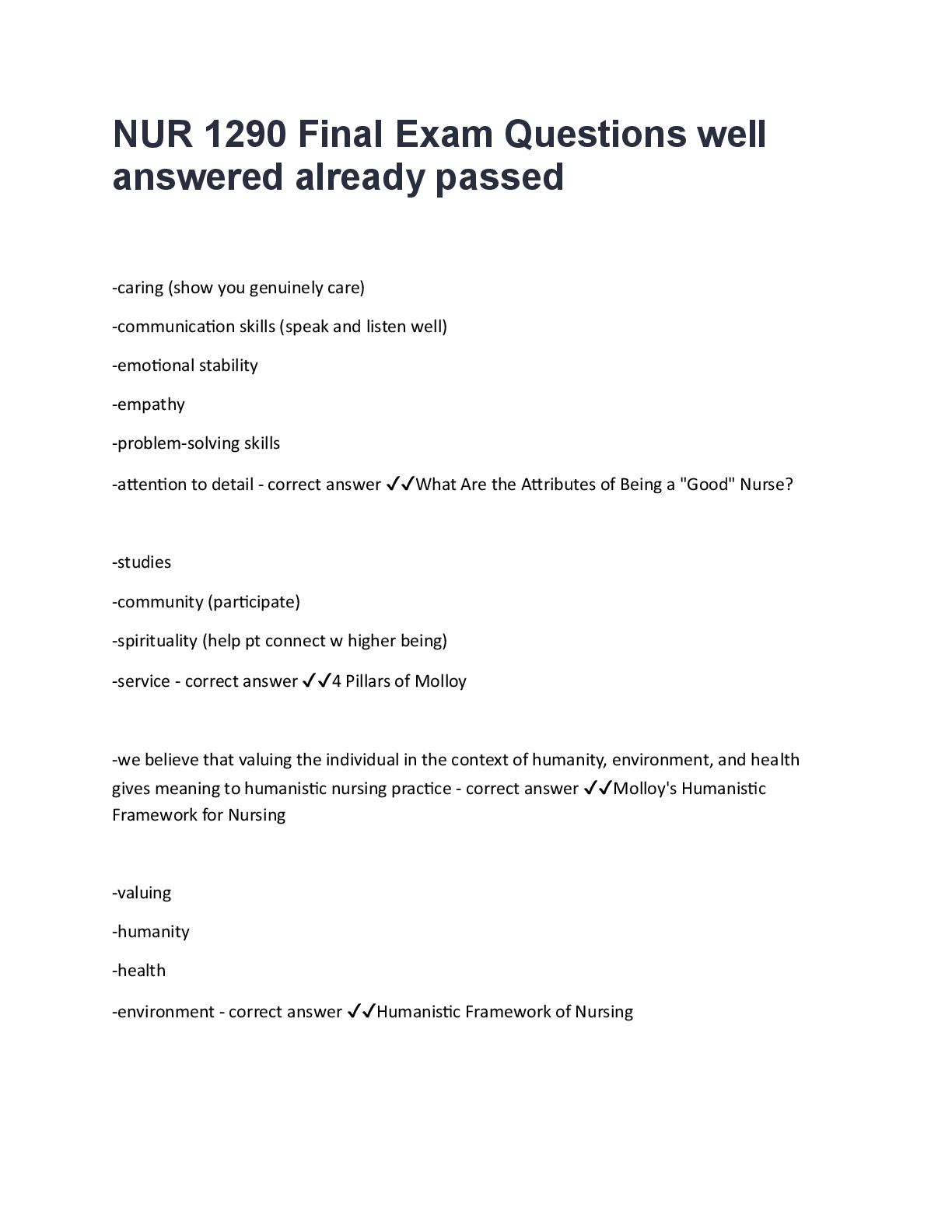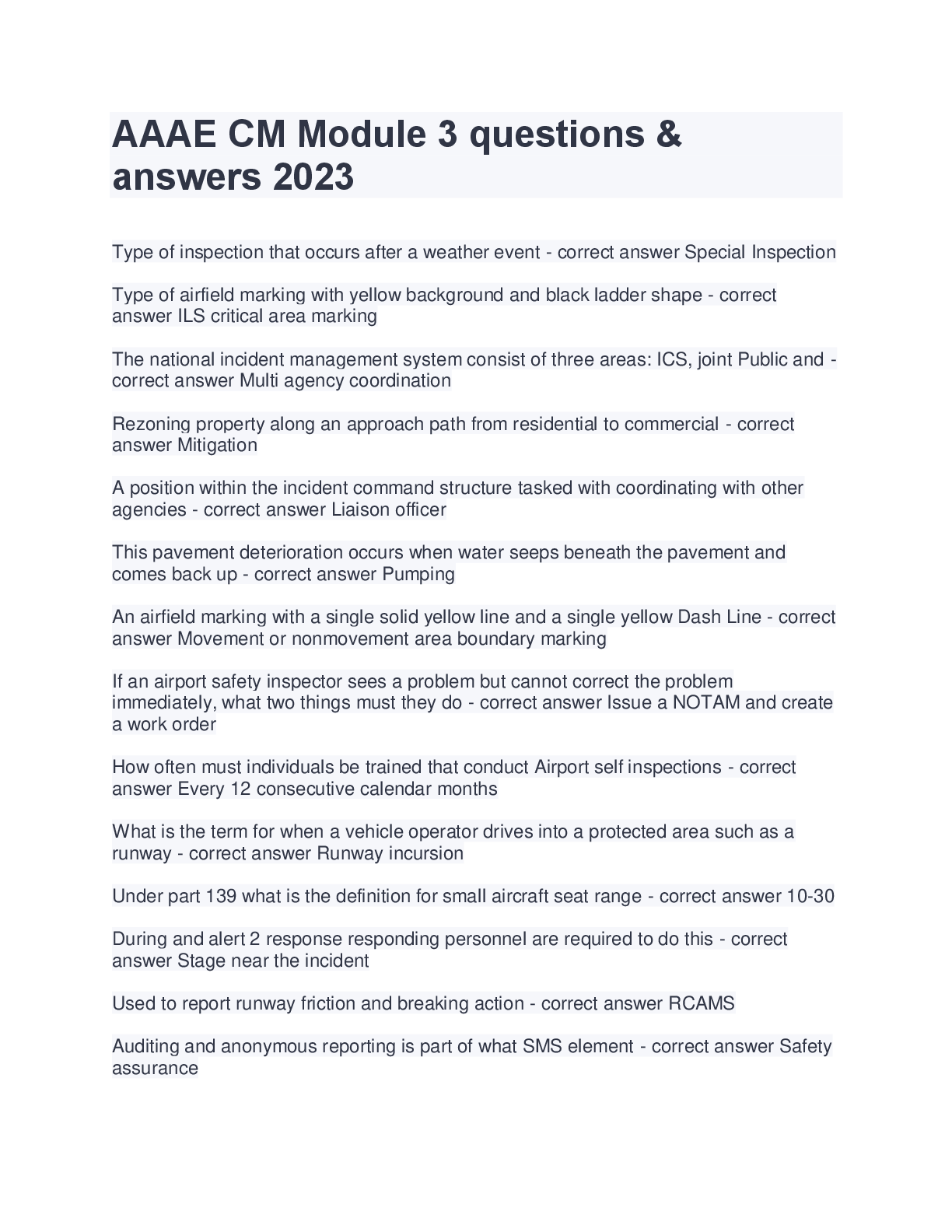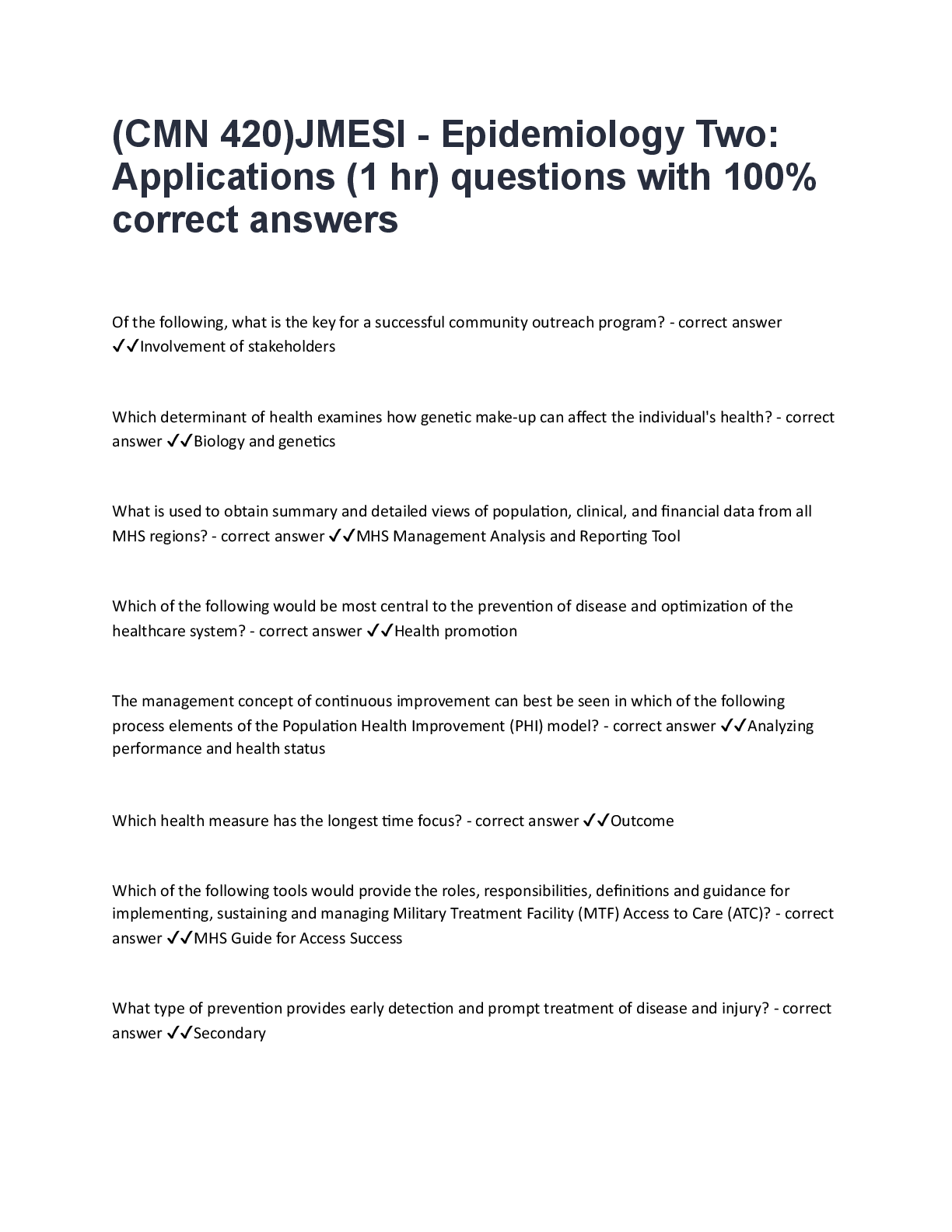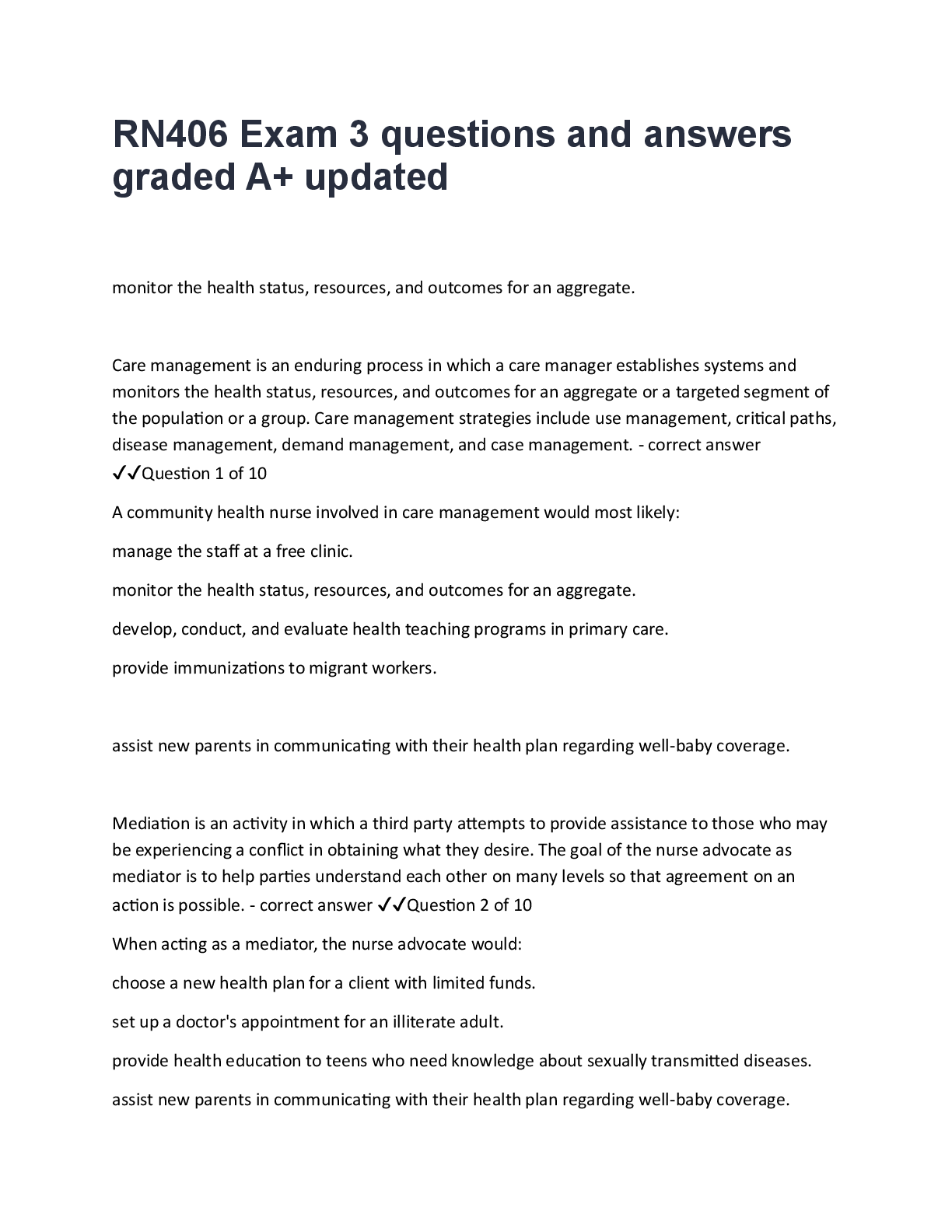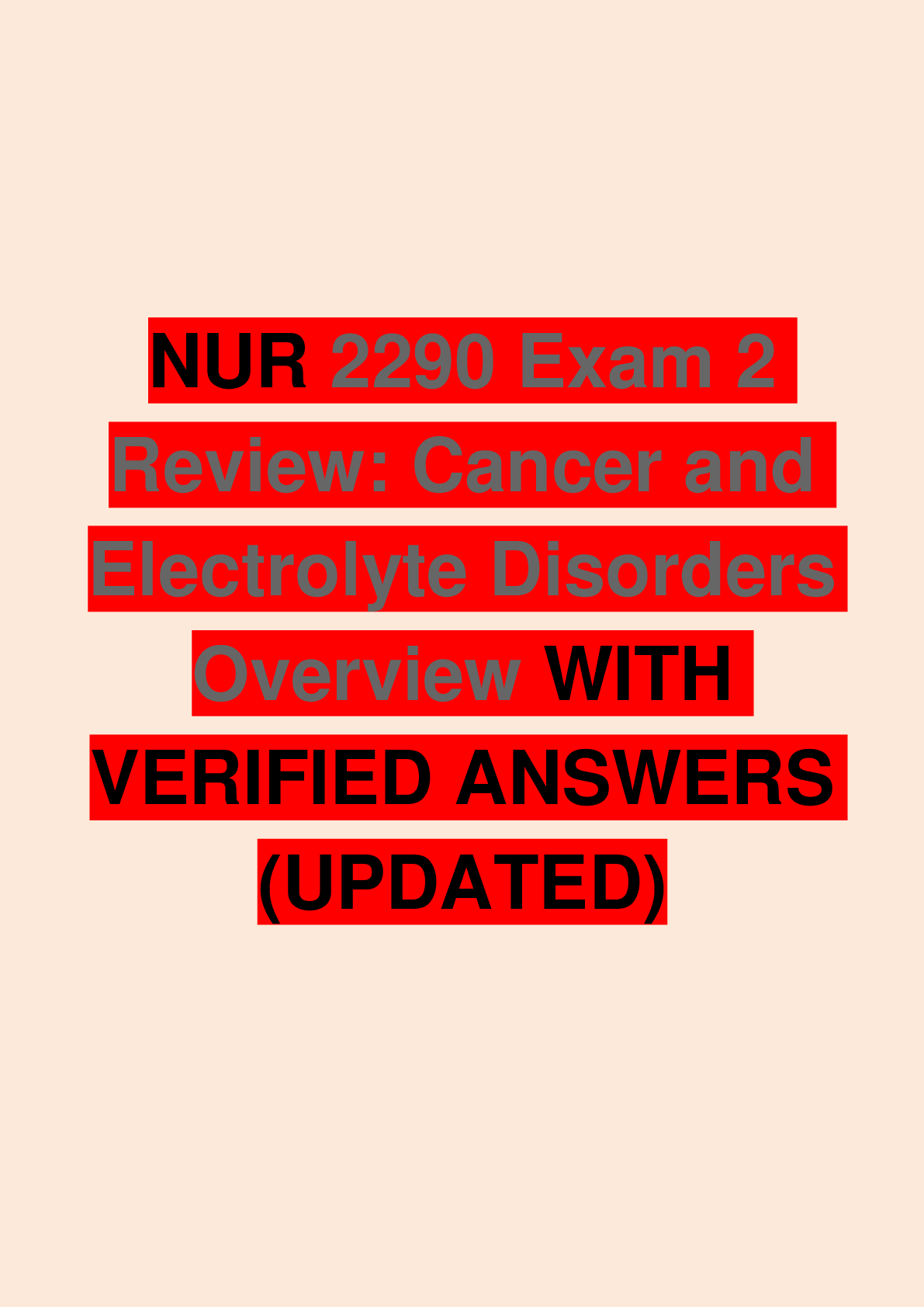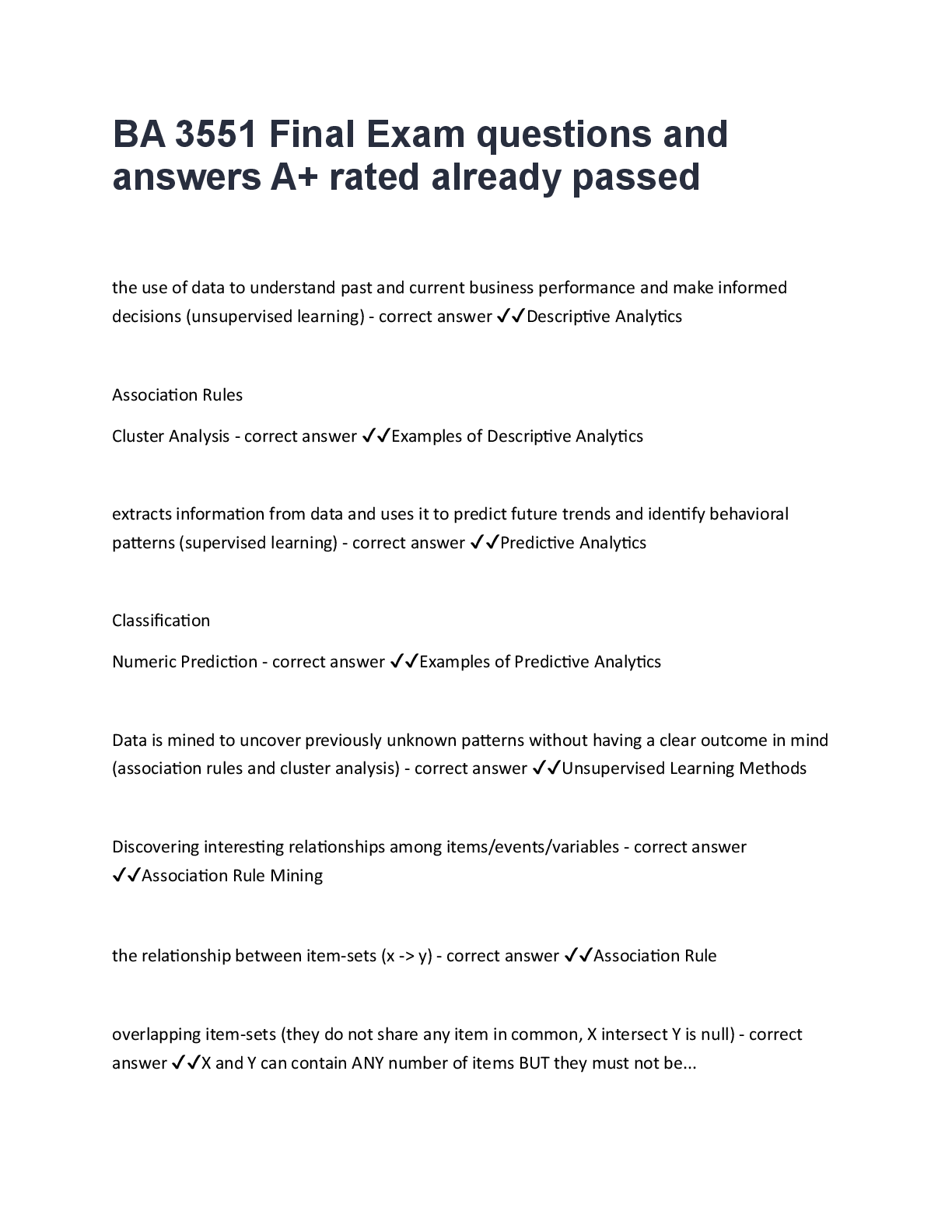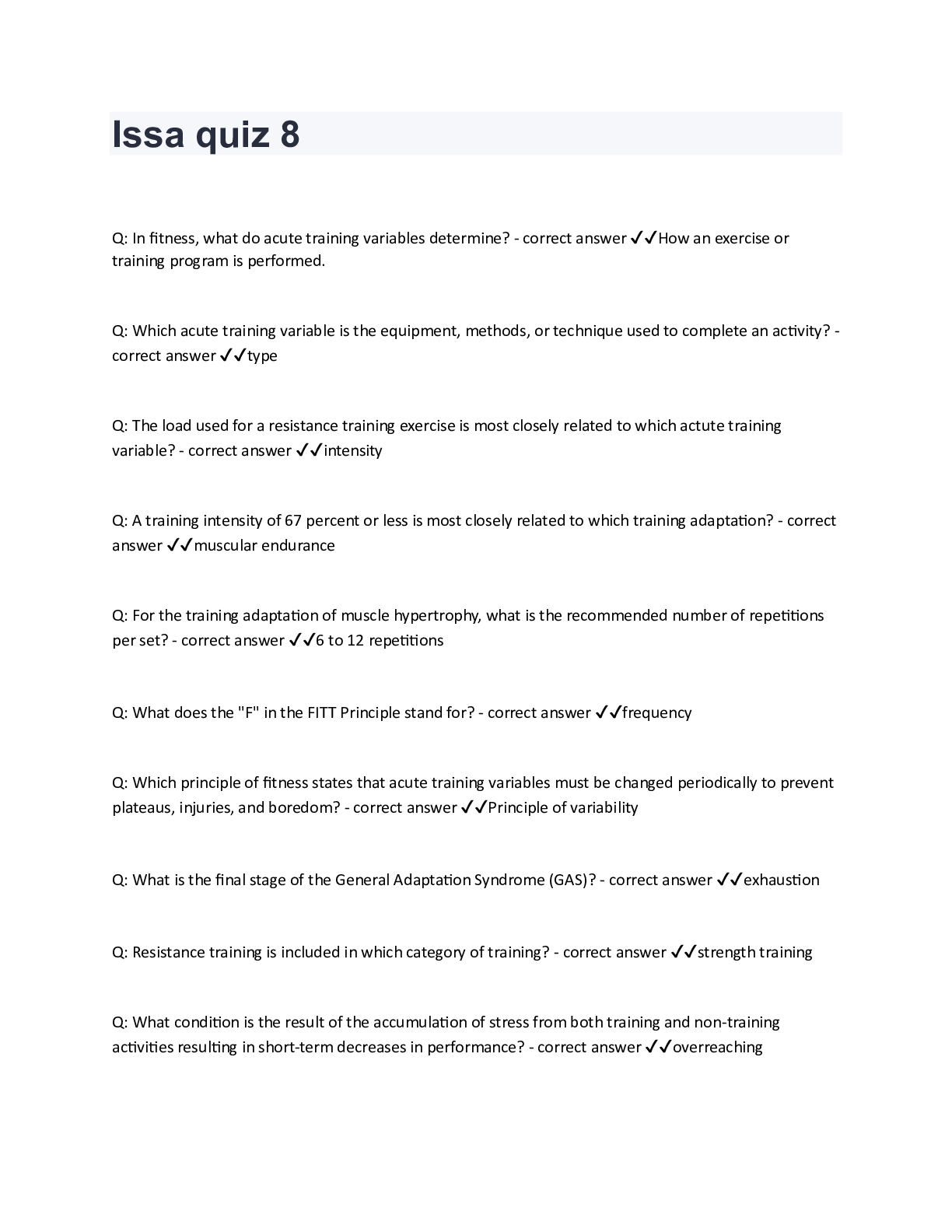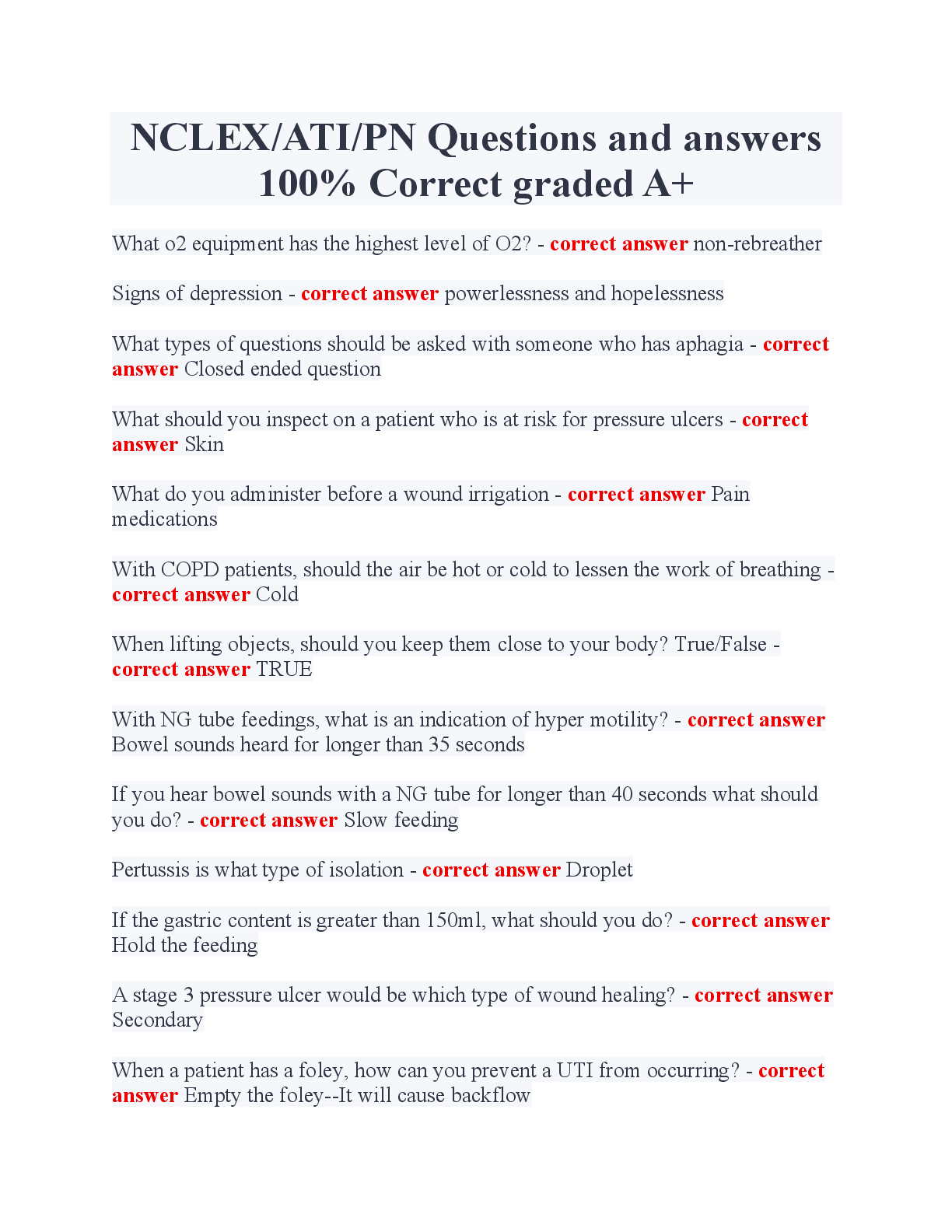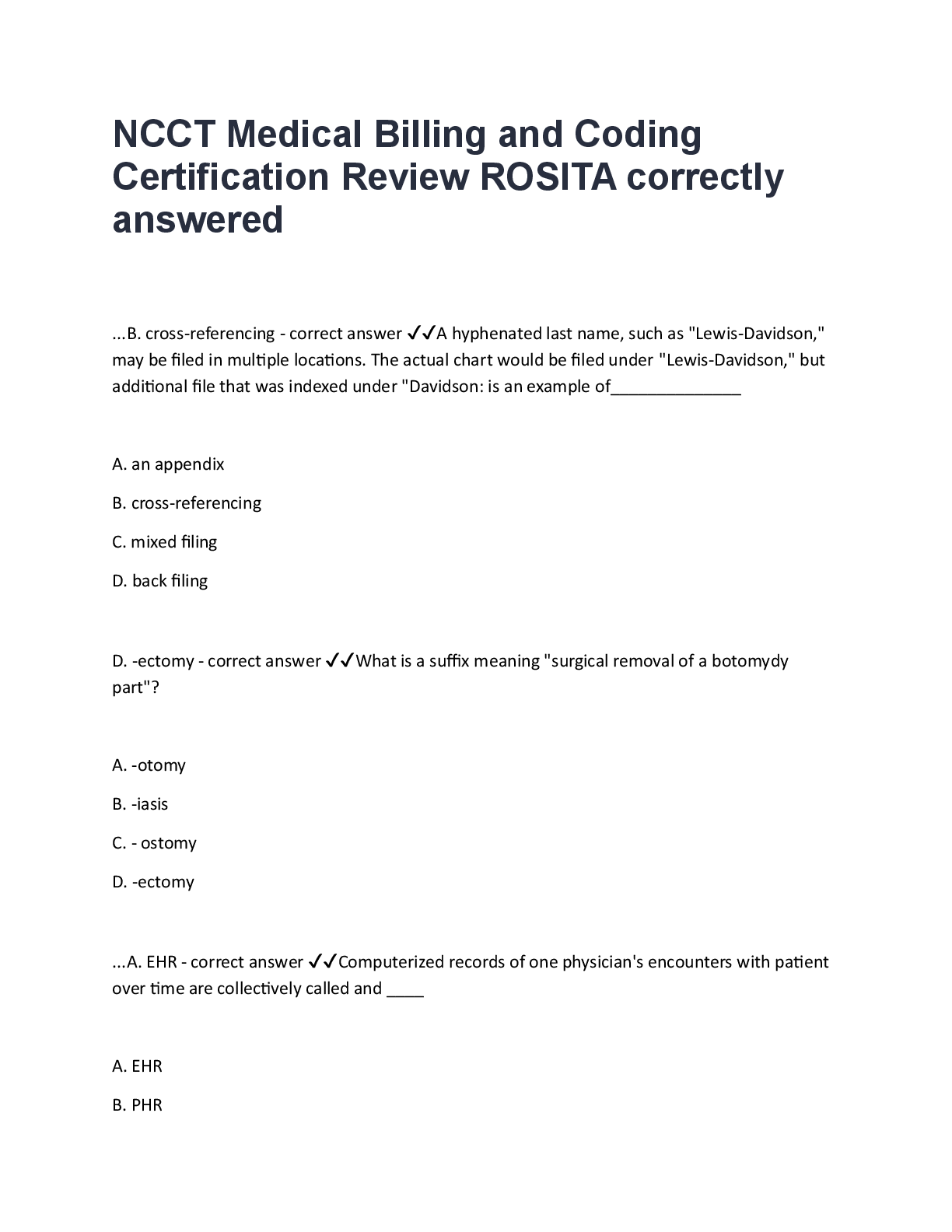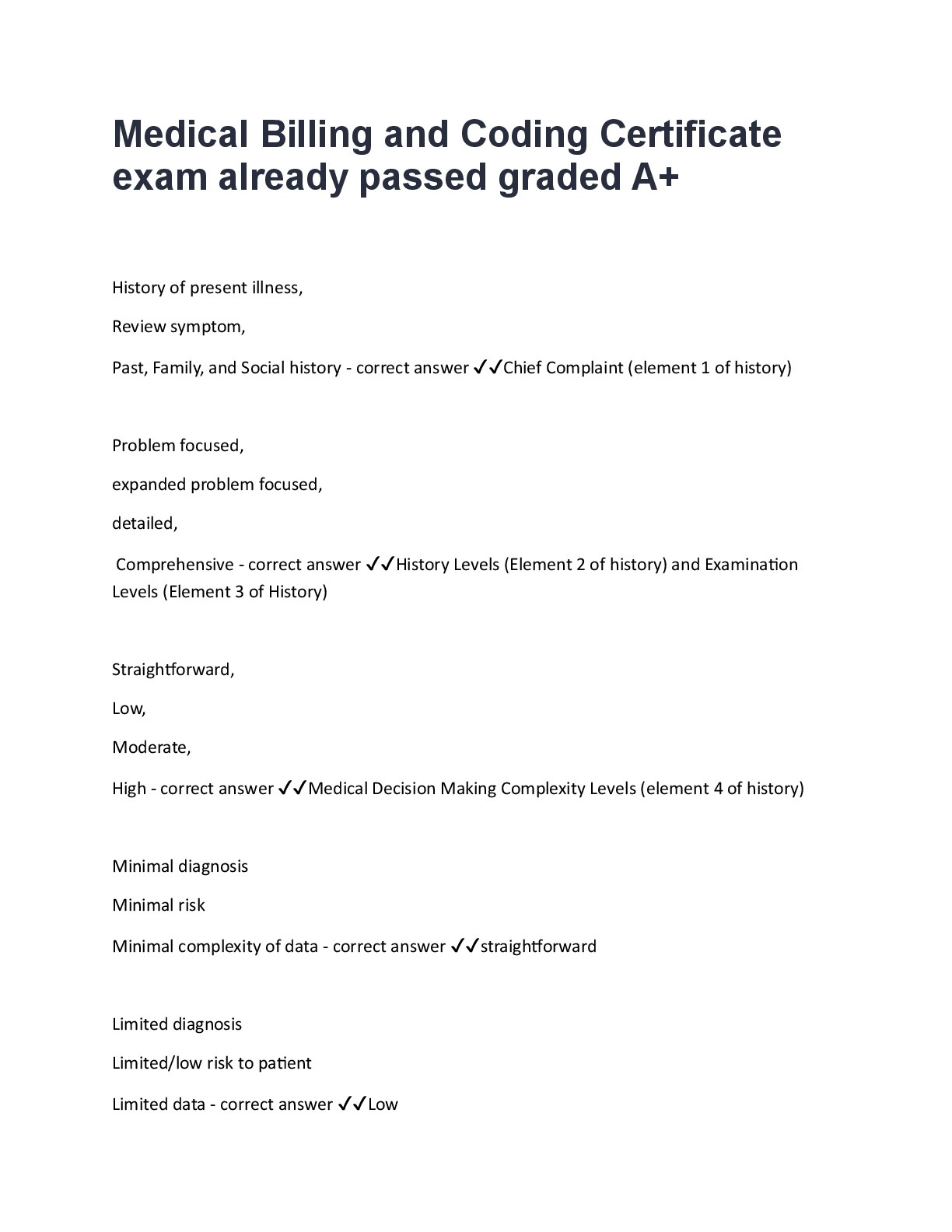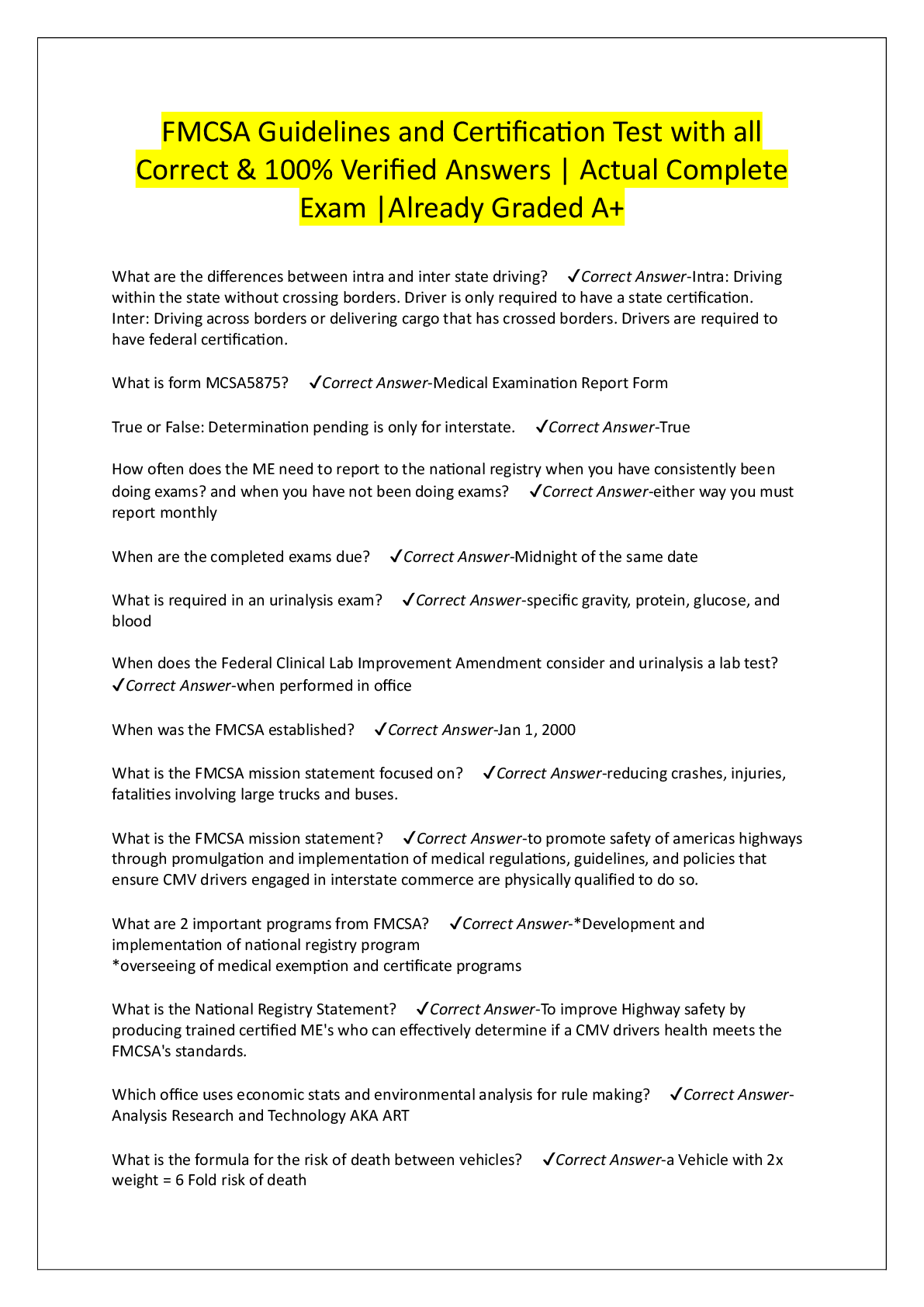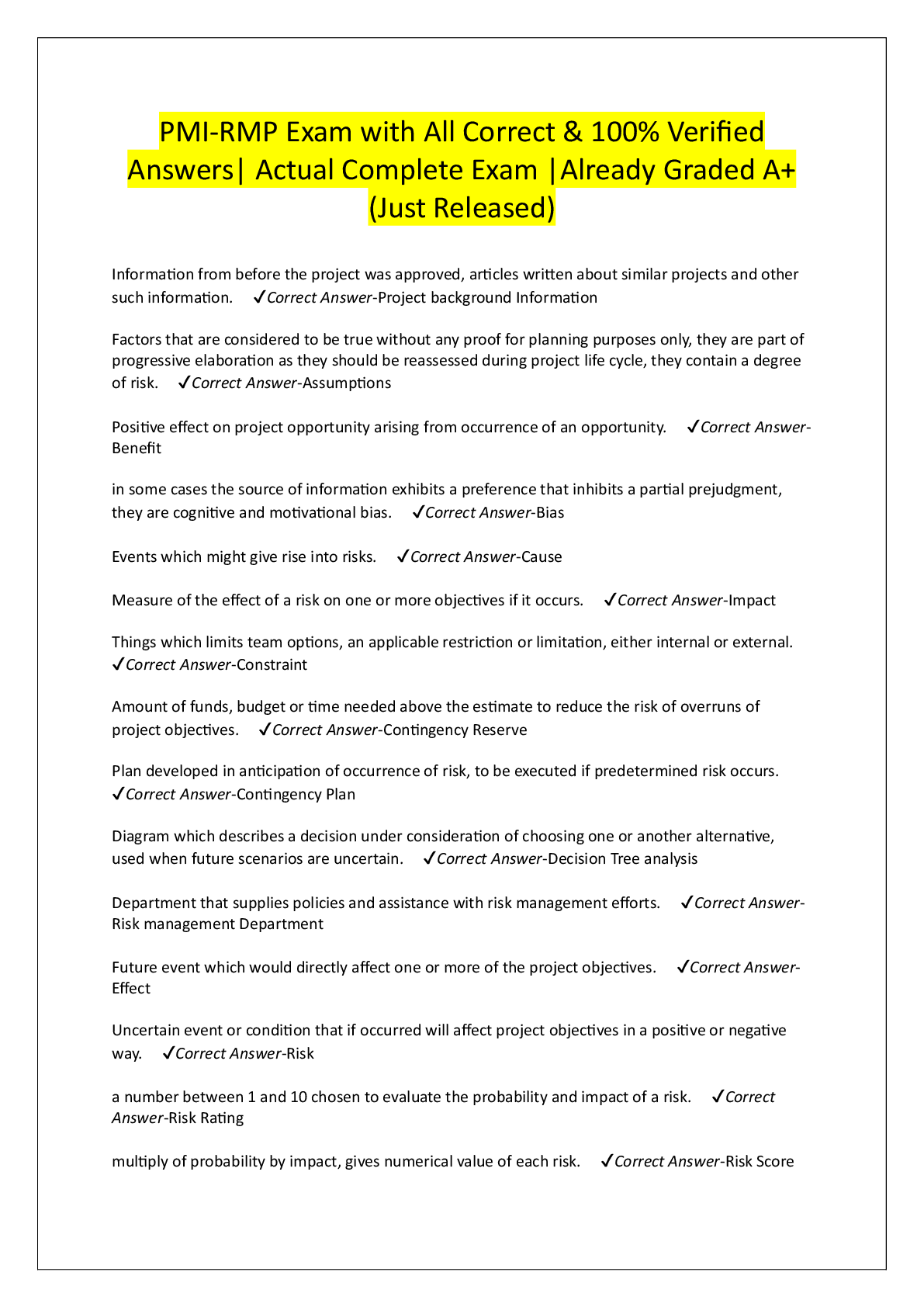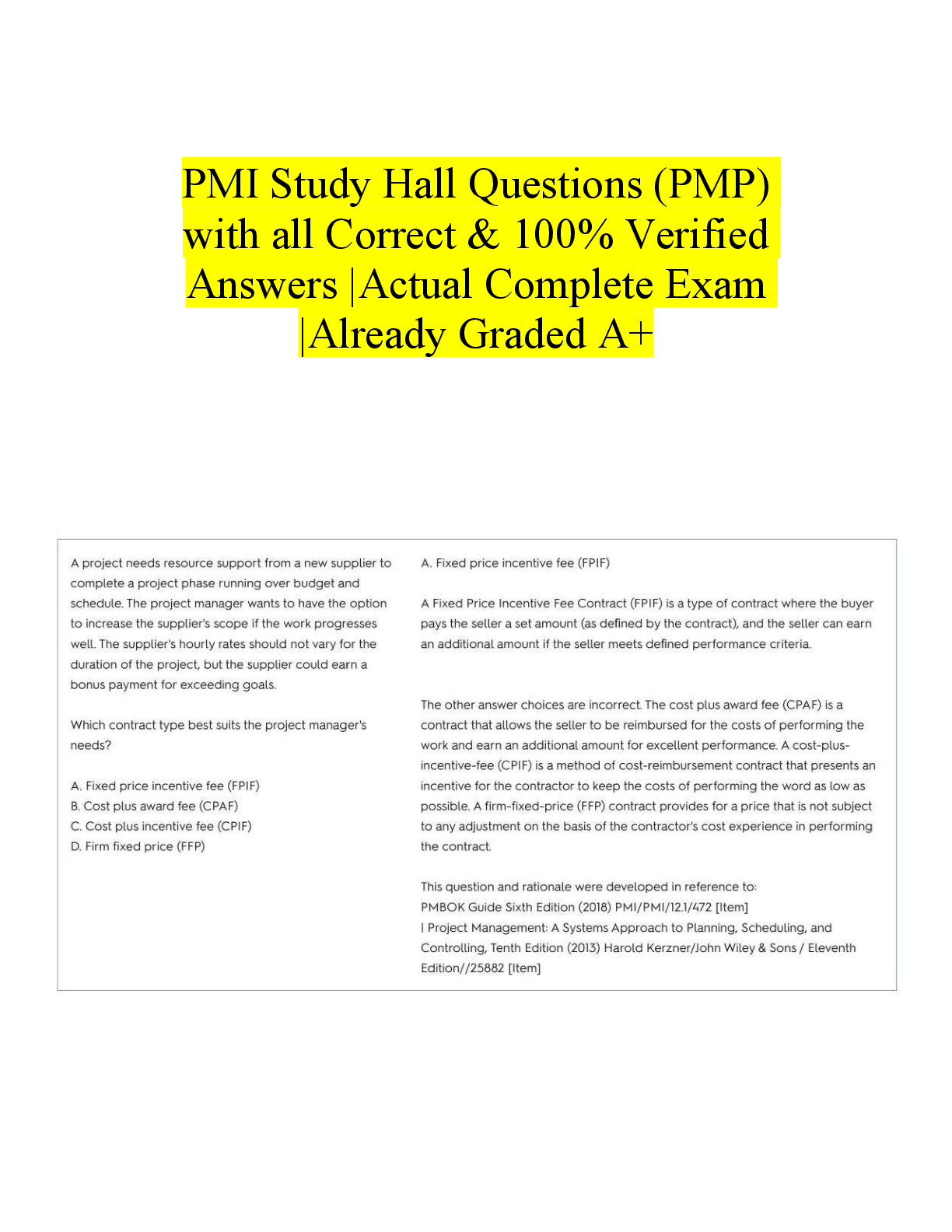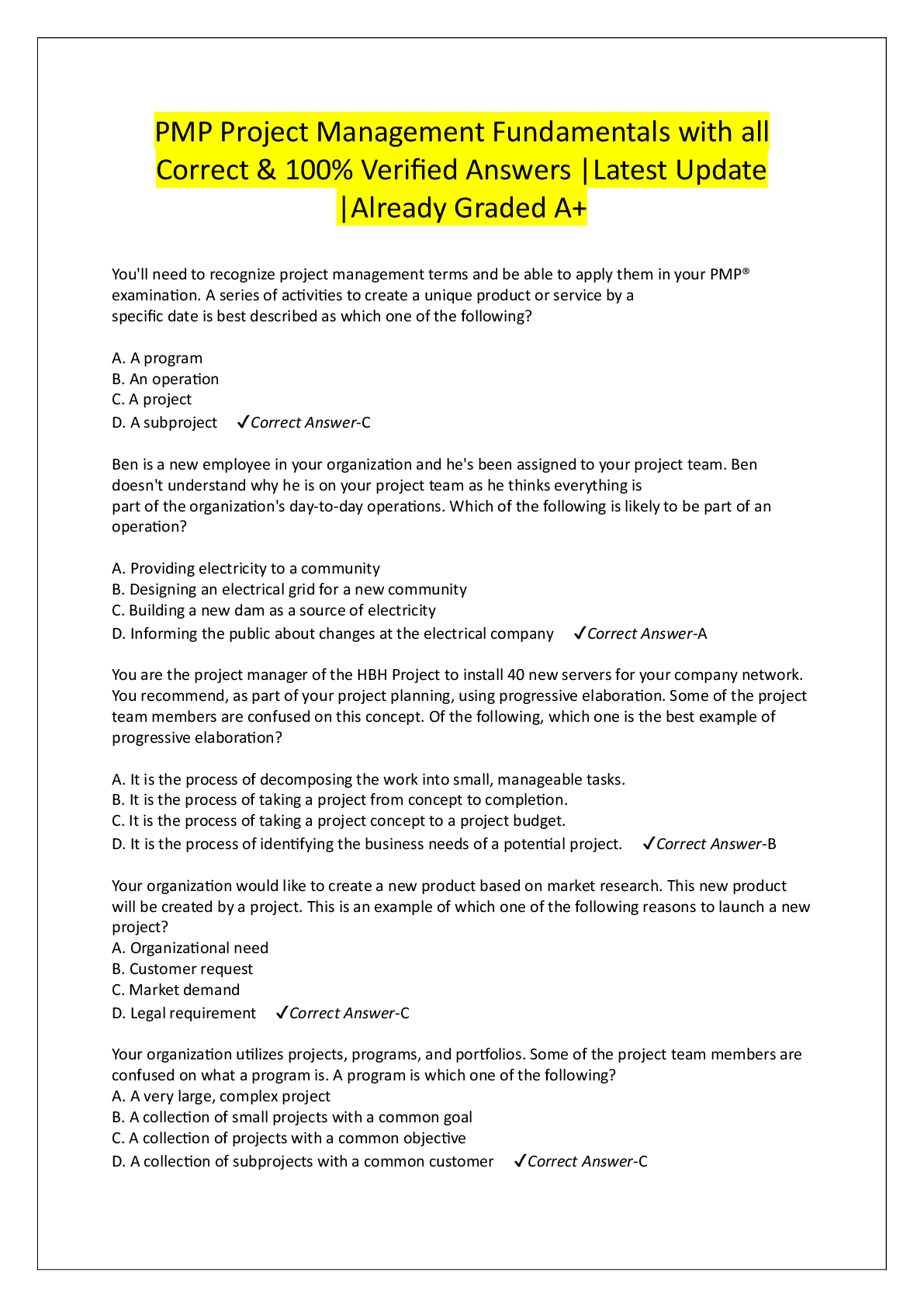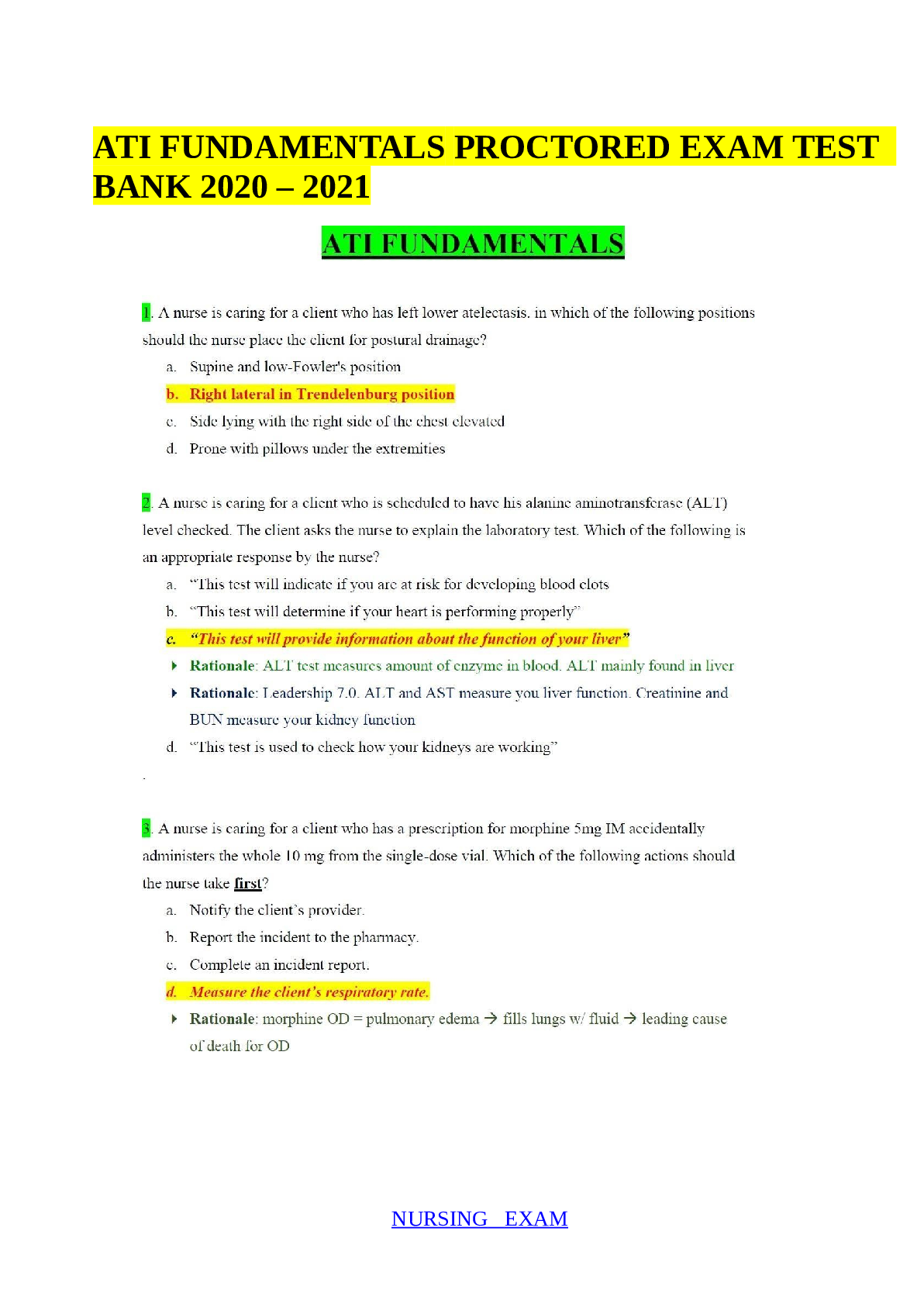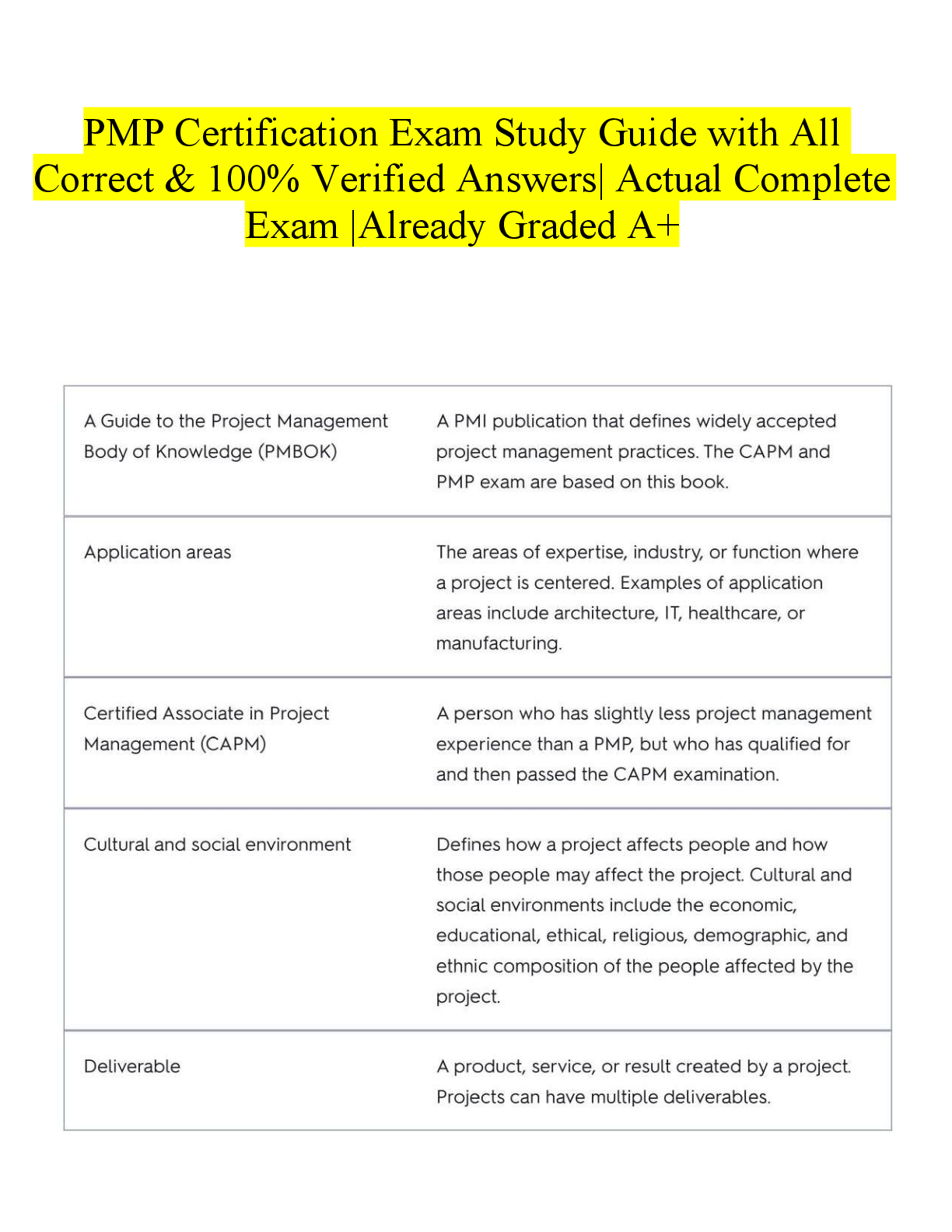AORN PERIOP 101 questions with correct answers latest 2023
Document Content and Description Below
All the following professionals are qualified to provide anesthesia to a patient EXCEPT: a) anesthesiologist b) CRNA c) anesthesiology assistant d) operating surgeon d) operating surgeon O ... f the following, which is not used to secure airway: a) ET tube b) LMA c) nasal cannula d) oral airway c) nasal cannula The perioperative team should know the location of equipment stored in the OR and in the department. Equipment that the anesthesia provider may request includes: a) video laryngoscopy devices b) fiberoptic bronchoscopes c) suction tips and devices d) all of the above d) all of the above General Anesthesia a drug-induced reversible state of unconsciousness, it includes amnesia, analgesia, loss of responsiveness, decreased stress response, and loss of skeletal muscle reflexes to varying degree Regional Anesthesia an injection of local anesthetics near nerve fibers to cause reversible loss of sensation over an area of the body, common examples include spinal, epidural, and peripheral nerve blocks Monitored Anesthesia Care (MAC) when an anesthesia provider monitors the patient, administers sedatives and other agents as needed, and provides medical services as needed Moderate Sedation the administration of sedative, analgesic, and/or anxiolytic agents by a physician or under physician supervision. Depending on state laws and hospital policies, a perioperative nurse may be able to administer this type of anesthesia Local Anesthesia The infiltration or topical administration of agents to anesthetize a part of the body. It is typically used for minor procedures, does not involve an anesthesia provider, and does not involve sedation. A perioperative nurse monitors the patient and provides supportive care if needed. The phases of general anesthesia, in order, are: a) induction, maintenance, emergence b) emergence, maintenance, induction c) maintenance, emergence, induction d) induction, emergence, maintenance a) induction, maintenance, emergence Propofol IV induction agent etomidate IV induction agent methohexitol IV induction agent IV induction agent ketamine sevoflurane with or without nitric oxide inhaled induction agent Succinylcholine short-acting muscle relaxant cisatracurium intermediate-acting muscle relaxant atracurium intermediate-acting muscle relaxant rocuronium intermediate-acting muscle relaxant vecuronium intermediate-acting muscle relaxant pancuronium long-acting muscle relaxant isoflurane used for inhalation maintenance desflurane used for inhalation maintenance total iv anesthesia (TIVA) a technique for maintaining anesthesia using infusions of short-acting IV agents without inhalation anesthetics. Propofol and remifentanil are often used for TIVA. Reversal agent for succinylcholine none! neostigmine reversal for muscle relaxant (except succinylcholine) edrophonium reversal for muscle relaxant (except succinylcholine) sugammadex reversal agent for rocuronium, vecuronium, and pancuronium flumazenil reversal agent for benzos (midazolam) naloxone reversal agent for narcotics (fentanyl) which of the following type of airway maintenance usually requires muscle relazants? a) spontaneous respiration b) mask ventilation c) laryngeal mask airway d) endotracheal intubation d) endotracheal intubation [Show More]
Last updated: 2 years ago
Preview 1 out of 37 pages

Buy this document to get the full access instantly
Instant Download Access after purchase
Buy NowInstant download
We Accept:

Also available in bundle (1)
Click Below to Access Bundle(s)
 AORN PeriOp 101 Exam fully solved!.png)
Package deal of AORN PeriOP 101 COMPLETE SOLUTION 2023
2021(latest update) AORN PeriOp 101 Exam fully solved! 2021(latest update) AORN PeriOp 101 Exam fully solved! AORN PeriOP 101 Exam graded A+ already passed 2023 AORN test questions and answer...
By Favourfourtune 2 years ago
$60.5
19
Reviews( 0 )
$30.00
Can't find what you want? Try our AI powered Search
Document information
Connected school, study & course
About the document
Uploaded On
Feb 07, 2023
Number of pages
37
Written in
All
Additional information
This document has been written for:
Uploaded
Feb 07, 2023
Downloads
0
Views
111

